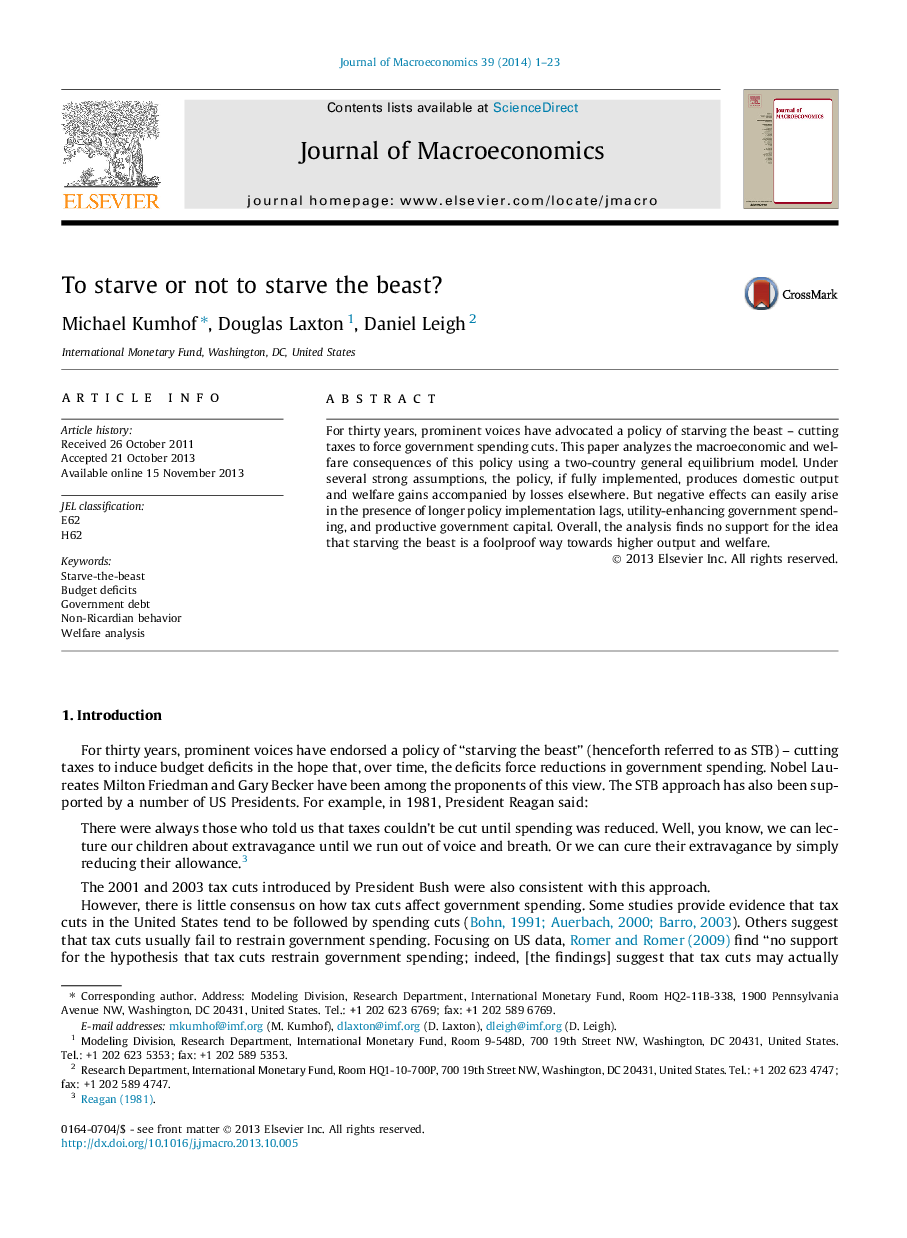| Article ID | Journal | Published Year | Pages | File Type |
|---|---|---|---|---|
| 964912 | Journal of Macroeconomics | 2014 | 23 Pages |
•We model a policy of cutting taxes to induce future government spending cuts.•In a 2-country DSGE setup this raises welfare, but only under strong assumptions.•Negative effects arise if the spending cuts are slow or aborted and debt rises more.•Negative effects arise if government spending contributes directly to utility.•Negative effects arise if government spending contributes directly to productivity.
For thirty years, prominent voices have advocated a policy of starving the beast – cutting taxes to force government spending cuts. This paper analyzes the macroeconomic and welfare consequences of this policy using a two-country general equilibrium model. Under several strong assumptions, the policy, if fully implemented, produces domestic output and welfare gains accompanied by losses elsewhere. But negative effects can easily arise in the presence of longer policy implementation lags, utility-enhancing government spending, and productive government capital. Overall, the analysis finds no support for the idea that starving the beast is a foolproof way towards higher output and welfare.
